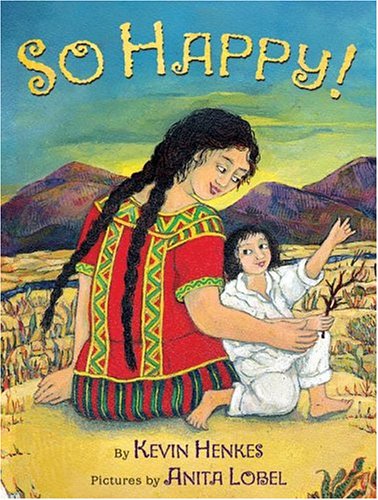Genre - Picture book
Rating - 5/5
Age group recommendation - Grades K-3
The Scoop - A bored boy, a wandering rabbit, and a magic seed cross paths one rainy day.
The Story - This is a fun and fanciful book that is multicultural and universal at the same time (if that makes sense!). The story never mentions where the family lives or anything particular to their culture; however, the illustrations are very specific to Mexico or the Southwest. The colors and the clothing definitely indicate a Hispanic culture. The story contains things many children can identify with - being bored until something happens, getting lost like the rabbit, and the excitement of a "magic" seed finally growing. The illustrations are engaging and have a Van Gogh style that children could easily relate to.
Educational applications
Georgia Performance Standards
Rating - 5/5
Age group recommendation - Grades K-3
The Scoop - A bored boy, a wandering rabbit, and a magic seed cross paths one rainy day.
The Story - This is a fun and fanciful book that is multicultural and universal at the same time (if that makes sense!). The story never mentions where the family lives or anything particular to their culture; however, the illustrations are very specific to Mexico or the Southwest. The colors and the clothing definitely indicate a Hispanic culture. The story contains things many children can identify with - being bored until something happens, getting lost like the rabbit, and the excitement of a "magic" seed finally growing. The illustrations are engaging and have a Van Gogh style that children could easily relate to.
Educational applications
Georgia Performance Standards
S1L1
Grade: 1
Description: S1L1 Students will investigate the characteristics and basic needs of plants and animals.
Grade: 1
Description: S1L1 Students will investigate the characteristics and basic needs of plants and animals.
To be used in conjunction with the class planting and monitoring the growth of a plant from seed to sprout. The book can be used in two ways. First, the book could be read to the class before the project begins. At the point in the story before the rain begins, students are asked what the magic seed needs in order to grow. If the book is used after the seed lesson has begun, students are asked what the seed's life cycle wold have been like if it weren't "magic." Students can also name the parts of a plant that are visible when it begins sprouting after the rain.
So Happy! by Kevin Henkes Illustrated by Anita Lobel
New York : Greenwillow Books, c2005
Copy from Atlanta Fulton County Library






